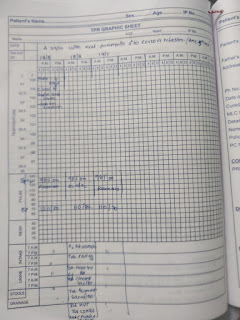FIRST INTERNAL ASSESSMENT
FIRST INTERNAL ASSESSMENT
Question 1: OSTEOPOROSIS
link: https://rishik37.blogspot.com/2021/08/gm-elog-case-7.html?m=1
Answer:
Bone density is the amount of bone tissue in a certain volume of bone. This is measured by a central DXA of the hip and spine.
https://www.nof.org/patients/diagnosis-information/bone-density-examtesting/
Question : MYXOEDEMA COMA
Link: http://mahithguduri63.blogspot.com/2021/09/myxedema-coma.html(
ANSWER
QUESTION: YOUNG ONSET HYPERTENSION
LINK: http://keerthykasa80.blogspot.com/2021/09/a-35-year-old-female-with-hypertensive.html(22nd
ANSWER:
Primarily confirm the diagnosis, further assess the lifestyle and drug intake as many drugs can cause hypertension. Then look into causes of secondary hypertension such as thyroid dysfunction, fibromuscular dysplasia, renal parenchyma disease etc.
Reference : https://www.aafp.org/afp/2010/1215/p1471.html
QUESTION: LOCALIZATION OF ANATOMICAL LEVEL OF LESION IN SPINAL CORD DISEASE
LINK: http://sowmya9.blogspot.com/2021/08/21-year-old-with.html(2nd
ANSWER:
The C3-4 cord contains the phrenic nucleus. The cervical cord innervates the deltoids (C4), biceps (C4-5), wrist extensors (C6), triceps (C7), wrist extensors (C8), and hand muscles (C8-T1).The thoracic vertebral segments form the back wall of the pulmonary cavity and the ribs. The spinal roots form the intercostal (between the ribs) nerves that run on the bottom side of the ribs and connect to the intercostal muscles and associated dermatomes. Injuries to T12 and L1 vertebra damage the lumbar cord. Injuries to L2 frequently damage the conus. Injuries below L2 usually involve the cauda equina and represent injuries to spinal roots rather than the spinal cord proper.
C2 to C4. The C2 dermatome covers the occiput and the top part of the neck. C3 covers the lower part of the neck to the clavicle (the horizontal bone that goes to the shoulder. C4 covers the area just below the clavicle. C5 to T1. These dermatomes are all situated in the arms. C5 covers the lateral arm at and above the elbow. C6 covers the forearm and the radial (thumb) side of the hand. C7 is the middle finger, C8 is the lateral aspects of the hand, and T1 covers the medial side of the forearm.
T2 to T12. The thoracic covers the axillary and chest region. T3 to T12 covers the chest and back to the hip girdle. The nipples are situated in the middle of T4. T10 is situated at the umbilicus. T12 ends just above the hip girdle.
L1 to L5. The cutaneous dermatome representing the hip girdle and groin area is innervated by L1 spinal cord. L2 and 3 cover the front part of the thighs. L4 and L5 cover medial and lateral aspects of the lower leg.
S1 to S5. S1 covers the heel and the middle back of the leg. S2 covers the back of the thighs. S3 cover the medial side of the buttocks and S4-5 covers the perineal region. S5 is of course the lowest dermatome and represents the skin immediately at and adjacent to the anus.
QUESTION: ATRIAL FIBRILLATION
ANSWER:
QUESTION: MEGALOBLASTIC ANAEMIA
ANSWER:









Comments
Post a Comment